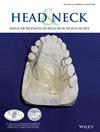Comparative effectiveness and cost-effectiveness of endoscopic nasopharyngectomy versus intensity-modulated radiotherapy in the treatment of recurrent nasopharyngeal carcinoma: A microsimulation analysis
Abstract
Background
Nasopharyngeal carcinoma (NPC) is a significant health concern in southern China, like Guangdong and Hong Kong. This study aims to predict the effectiveness and cost-effectiveness of two prevalent NPC treatments, intensity-modulated radiotherapy (IMRT) and endoscopic nasopharyngectomy (ENPG).
Methods
A microsimulation model was developed to project the long-term outcomes of IMRT and ENPG, simulating 5000 patients with hypothetical locally recurrent NPC for each treatment option. The tumors of patients confined to the nasopharyngeal cavity, the post-naris or nasal septum, the superficial parapharyngeal space, or the base wall of the sphenoid sinus. Analyses were performed from the healthcare system perspectives of Mainland China and the healthcare provider perspective of Hong Kong, with input parameters sourced from the existing literature and databases. The robustness of findings was evaluated through one-way and probabilistic sensitivity analyses.
Results
For DFS, ENPG showed a 29% reduction in risk with an HR of 0.71 (95% CI: 0.64–0.77) compared to IMRT. ENPG demonstrated a significant survival benefit in OS with an HR of 0.59 (95% CI: 0.54–0.65), equating to a 41% reduction in mortality risk. In Hong Kong, IMRT and ENPG yielded QALY gains of 4.59 and 6.29, respectively, with ENPG exhibiting an incremental cost-effectiveness ratio (ICUR) of USD 13 057 per QALY. For Mainland China, ENPG denominated the IMRT and the ICUR was USD −1450 QALY. Probabilistic sensitivity analysis showed a 100% probability of ENPG being cost-effective at the willingness-to-pay thresholds of USD 130 490 per QALY in Hong Kong and USD 12 741 per QALY in Mainland China.
Conclusion
The analysis confirms that ENPG is more effective and cost-effective than IMRT for treating recurrent NPC in both Hong Kong and Mainland China.

 求助内容:
求助内容: 应助结果提醒方式:
应助结果提醒方式:


